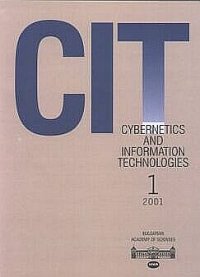Editorial policy
The journal Cybernetics and Information Technologies publishes scientific papers and surveys, presenting original theoretical and application contributions to the fields of Computational Science and Engineering, Computer Applications, Information Technologies, and Systems and Control Engineering. The scientific papers and surveys should not have been previously published, submitted or accepted for publication elsewhere. This is an open-access journal, which means that all content is freely available without charge to the users or their institution following the BOAI definition of open access.
Submitted manuscripts are subject to a single-blind peer review procedure. The reviewing is made by the Editorial Board, substantially supported by a pool of additional reviewers. Decision on whether or not to accept the paper is made by the Editor-in-Chief depending strongly on the reviewers' recommendations.
Ethical principles
The Editorial Board of Cybernetics and Information Technologies acknowledges and adheres to the Core Practices of the Committee on Publication Ethics (COPE) https://publicationethics.org/. The practical handling of these principles is conducted by the journal Editorial Board and is performed by the journal Editor-in-Chief and Secretary of the Editorial Board. The peer-reviewing process is made more transparent and less prone to conflicts of interests by: single-blind peer-reviewing; applying a common publicly available evaluation form with mandatory notes and recommendations sent to authors; announcing the pool of additional reviewers. The Editorial Board addresses potential conflicts of interest, appeals and disputes that may arise during peer review.
The author(s) of accepted papers sign a LICENSE TO PUBLISH to state clearly the issues of authorship, contributorship, and intellectual property as well as lack of conflict of interests
The Editorial Board handles possible authors’ or reviewers’ misconduct (suspected plagiarism, self-plagiarism and suspected salami publishing, AI-generated text, reviewers requiring authors to cite their work). The journal uses the iThenticate platform in order to ensure that the content published is original and trustworthy, and the Grammarly AI checker for detecting AI-generated text.
The journal employs mechanisms for correcting, revising or retracting articles after publication in cases of errors, complaints or misconduct identified after publication.
For details on the journal’s ethical principles and publication malpractice handling and the responsibilities of the editor, the reviewers and the authors, see the document
'Ethical principles and publication malpractice handling'.


